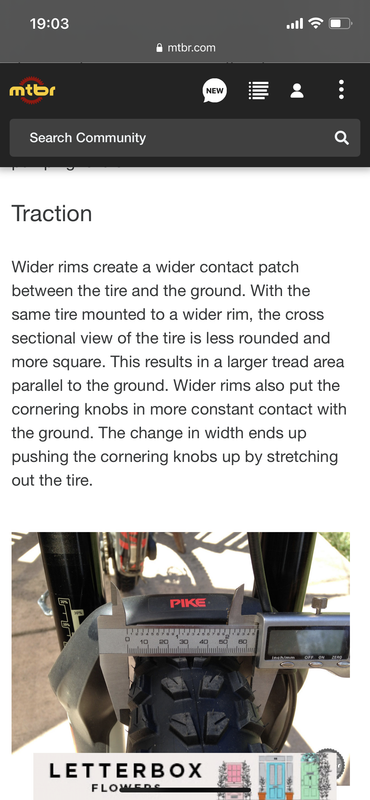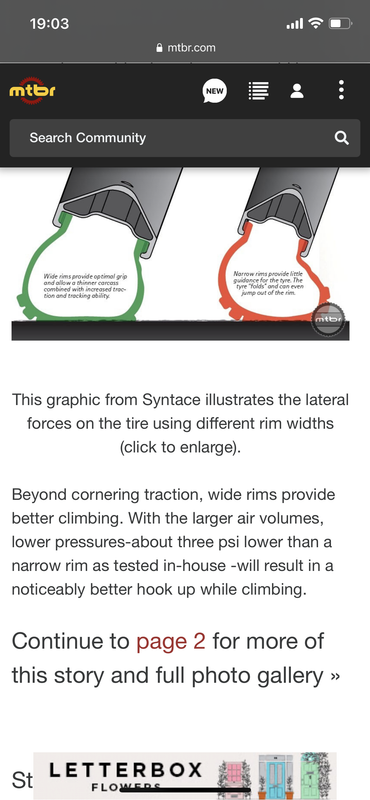2manyoranges
Old School Grand Master
- Feedback
- View
My_Teenage_Self":13mhq4lf said:hamster":13mhq4lf said:The tyre contact area is a function of tyre pressure not rim or tyre dimensions.
Interesting, I'd argue that it's a combination of all three, as well as the actual construction of the tyre itself.
d8mok":3o1kjpjf said:But surely a wider rim would give a squarer shape to a tyre which would lead to more contact area? Assuming same pressures and tyres used?
I was running 27mm rims and 30mm rims on two bikes. Same tyres and same pressures and the wider rim had a squarer profile tyre in contact with the ground.
hamster":33kctz75 said:My_Teenage_Self":33kctz75 said:hamster":33kctz75 said:The tyre contact area is a function of tyre pressure not rim or tyre dimensions.
Interesting, I'd argue that it's a combination of all three, as well as the actual construction of the tyre itself.
Here's why (apologies for crappy Imperial measurements, but it's easier as most people in the UK understand psi)
The tyre will deform under loading until the:
(area of the contact patch) = (the weight on the wheel) / (inflation pressure)
So a wheel with (say) a weight of 60lbs on it, inflated to 30psi will have a 2sq inch contact patch. Clearly if you deflate the tyre, it sinks and the contact patch enlarges. Overdo it and you break the equilibrium as when the rim hits the surface.
That's why lowering the tyre pressures increases traction, and how huge balloon tyres (like fat bikes) allows very low pressures.
You can weigh your car by driving it onto paper, drawing round the contact patches of the tyres, measuring the area and using the tyre pressures. If you work it out you discover that the contact patch for a car is about the size of two hand prints. :shock:
Rim width and wheel diameter change the shape of the contact patch - a more circular patch deforms the tyre less and as a result has lower drag. That's one reason why 29ers roll well.
It's basic physics but not widely understood.
legrandefromage":ip8czw8q said:Typical pinkbike answer, at least mine had pictures
And probably said the same thing
*I forgot add a smiley from my phone*
**yeah, thats what HE says**
My_Teenage_Self":1kejv51n said:I agree with what you're saying above, but still disagree with your original statement, and maintain it's a mixture of all three. a 2.6 tyre WILL have more contact patch than a 1.7 at useable pressures with the same loading. Equally, at the SAME pressures, a 2.8 will still have more contact patch. They may exert less ground pressure, but the contact patch will be different. By the time dynamic loads are taken into effect, all bets are off!
hamster":11x27alv said:d8mok":11x27alv said:But surely a wider rim would give a squarer shape to a tyre which would lead to more contact area? Assuming same pressures and tyres used?
I was running 27mm rims and 30mm rims on two bikes. Same tyres and same pressures and the wider rim had a squarer profile tyre in contact with the ground.
Right - wide rim gives a short contact patch, narrow rim is longer. The area will be the same, but the short contact patch also gives less tyre deformation (the bulge at the bottom).

